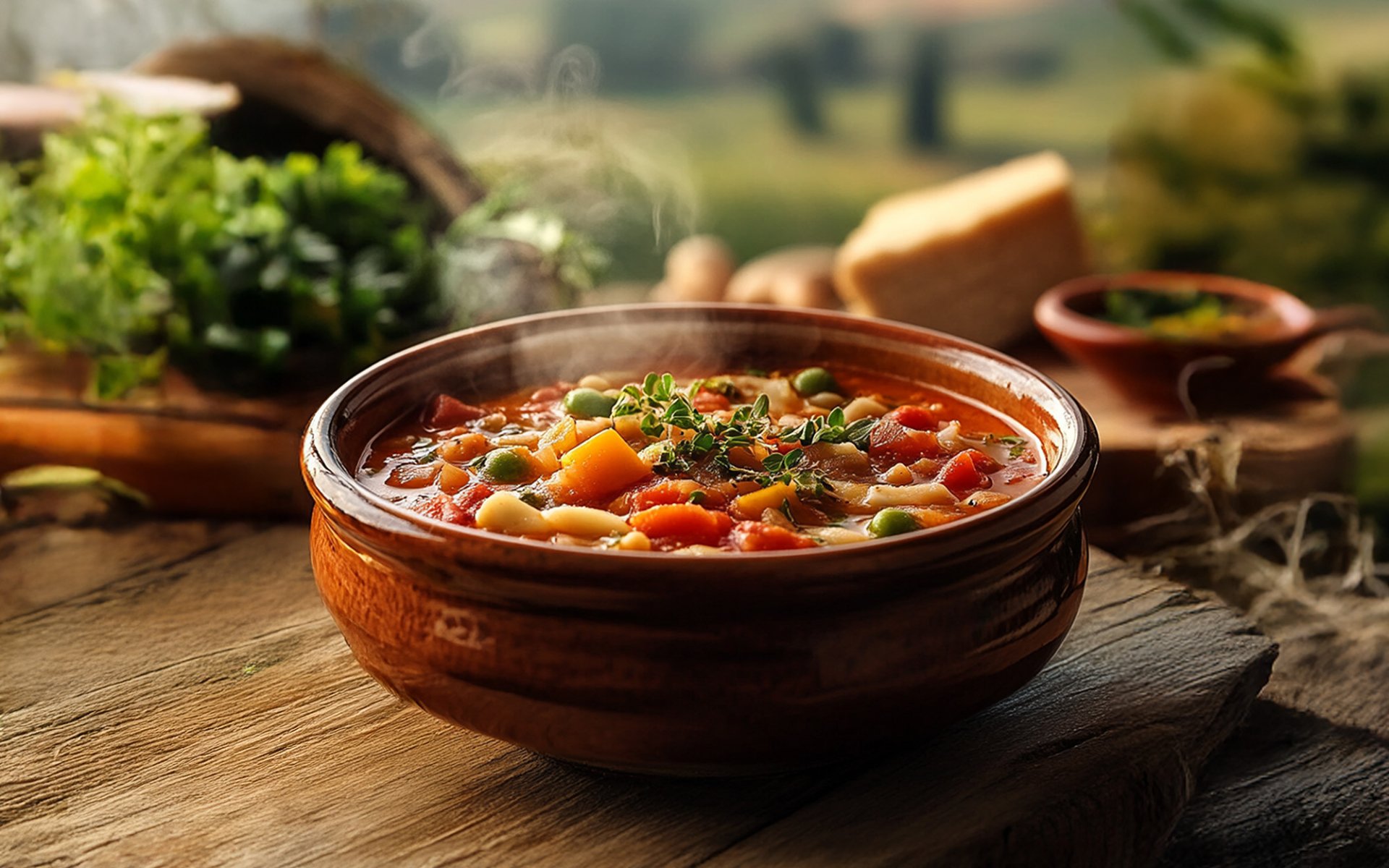Minestrone

A Soup Without Rules
Minestrone is a flexible Italian vegetable soupoften compared to Thai jab chai. It has no fixed recipe and features whatever vegetables are in season or readily available: onions, cabbage, tomatoes, asparagus, garlic, and more.
Ancient Roman Origins
In ancient Rome, food was simple and made from accessible ingredientsgarden vegetables, legumes, grains, and occasionally leftover meat. These were boiled together in broth to create a nutritious, filling mealmuch like today's Minestrone.
What "Minestrone" Really Means
The word Minestrone is derived from the Italian minestra (soup) with the suffix -one, which implies abundance. The name represents the rich, hearty nature of this soup.
The Agricultural Boom in the Middle Ages
With the rise of agriculture in medieval Italy, more vegetables became available. Olive oil began replacing animal fats, making the soup lighter, more flavorful, and healthier.
From Side Dish to Main Course
During this time, rice and pasta were added to Minestrone, turning it into a complete one-dish meal. It evolved from a simple vegetable soup into something substantial and nourishing.
New Ingredients from the Americas
After the discovery of the Americas in the 16th century, ingredients like tomatoes, potatoes, and corn entered European cuisine. Southern Italian Minestrone, in particular, embraced tomatoes as a core component.
Regional and Seasonal Differences
Northern Italy prefers Minestrone with potatoes, rice, and cheese; southern regions favor tomatoes, eggplant, and herbs. Summer versions are hydrating with zucchini and cucumber, while winter calls for hearty root vegetables like carrots and turnips.
Minestrone Around the World
As Italians migrated abroad, they brought their culinary traditions with them. Minestrone spread worldwide, adapting to local tastes while preserving its rustic, seasonal essence


